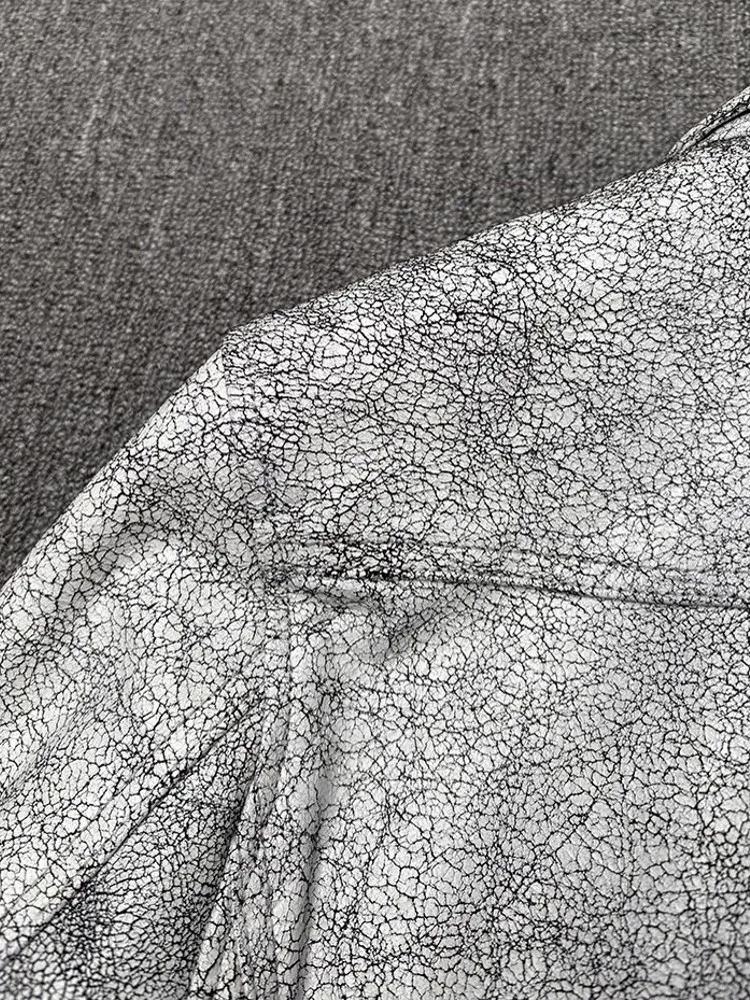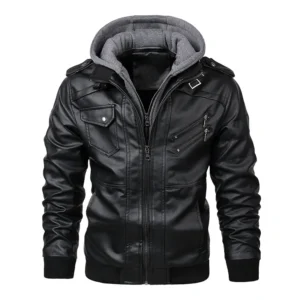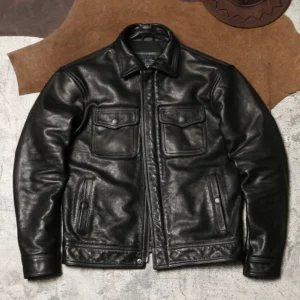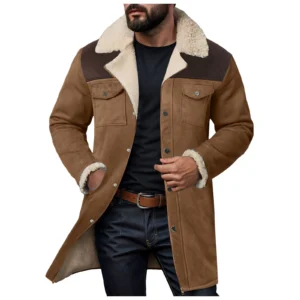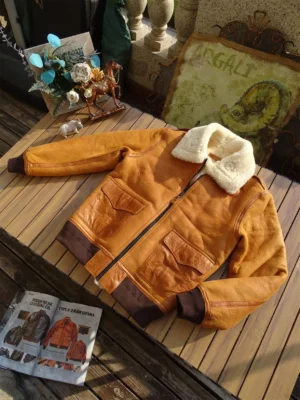Understanding Why Leather Conditioning is Essential
Leather conditioning is the process of replenishing the natural oils in leather that get depleted over time. Think of your leather coat as living skin that needs moisture and nourishment to stay healthy. Without these essential oils, leather becomes dry, brittle, and prone to damage, significantly shortening its lifespan.
The science behind conditioning is straightforward: leather is made of interwoven protein fibers that rely on natural oils for flexibility. When you wear your coat, these oils gradually evaporate and break down due to exposure to air, sunlight, heat, and everyday use. Quality conditioners penetrate the leather’s surface, replacing these lost oils and maintaining the material’s structural integrity at a molecular level.
Regular conditioning of your leather coat provides multiple important benefits:
- Prevents dryness and cracking by maintaining optimal moisture levels within the leather fibers
- Preserves suppleness and flexibility so your coat moves naturally with your body
- Enhances the coat’s appearance by restoring its rich color and subtle sheen
- Improves resistance to water and stains by creating a protective barrier on the surface
- Significantly extends the lifespan of your investment piece, potentially doubling how long it remains wearable
Leather’s porous nature makes it particularly vulnerable to environmental factors. Heat, cold, humidity, and pollutants all accelerate the depletion of these vital oils. Comprehensive leather coat care practices begin with proper conditioning, which forms the foundation of effective maintenance.
Before purchasing a leather coat from our collection of men’s leather and shearling coats, it’s worth understanding that proper conditioning will be essential to protect your investment.
Preparing Your Leather Coat for Conditioning
Proper preparation is crucial before applying any conditioner to your leather coat. Conditioning a dirty coat can trap debris in the leather fibers, potentially causing damage over time.
Empty All Pockets and Dust
Begin by emptying all pockets and giving your coat a thorough dusting. Use a soft, dry cloth to gently remove surface dust and debris. Pay particular attention to seams and folds where particles tend to accumulate.
Clean Thoroughly
Before conditioning, your coat needs to be clean. Use a leather cleaner specifically designed for garments—never household detergents or soaps, which can strip away natural oils and damage the leather’s finish. Apply the cleaner with a soft cloth using gentle circular motions.
For more stubborn spots, use targeted spot cleaning without oversaturating the leather. Thorough leather coat cleaning methods ensure that conditioner will be absorbed properly and effectively.
Allow Complete Drying
After cleaning, allow your coat to dry completely at room temperature. This typically takes 1-2 hours depending on humidity levels. Never use heat sources like hair dryers, heaters, or direct sunlight to speed up drying, as these can cause the leather to shrink, warp, or crack.
Perform a Patch Test
Before applying conditioner to the entire coat, perform a patch test in an inconspicuous area, such as an inside seam or inner pocket flap. Apply a small amount of conditioner and wait 24 hours to ensure there’s no adverse reaction like darkening, stiffening, or discoloration.
Selecting the right types of leather cleaners is just as important as the conditioning products you’ll use. Quality cleaners prepare the surface properly without damaging the leather’s natural properties.
Skipping these preparatory steps might seem like a time-saver, but doing so can lead to uneven conditioning, trapped dirt, or even permanent damage to your leather coat. Proper preparation ensures that your conditioning efforts will yield the best possible results.
Selecting the Ideal Leather Conditioner for Your Coat
Choosing the right conditioner for your leather coat can feel overwhelming given the many options available. Understanding the differences between conditioner types is crucial for maintaining your coat’s specific leather finish.
Types of Leather Conditioners
| Conditioner Type | Best For | Pros | Cons | Application Difficulty |
|---|---|---|---|---|
| Cream Conditioner | General use, most leather finishes | Balanced moisture, easy to control | May require more buffing | Easy |
| Oil-Based | Very dry leather, older coats | Deep penetration, maximum moisturizing | Can over-saturate, potential darkening | Moderate |
| Wax-Based | Weather protection, outdoor-use coats | Excellent water resistance, long-lasting | Heavier finish, can build up over time | Moderate |
| Spray Conditioner | Light conditioning, regular maintenance | Convenient, quick application | Less control, potential uneven coverage | Easy |
Beneficial Ingredients
Quality leather conditioners typically contain natural ingredients that nourish without damaging the leather. Look for products containing:
- Lanolin – A natural wax that closely mimics leather’s own oils
- Beeswax – Creates a protective barrier while remaining breathable
- Jojoba oil – Similar molecular structure to natural leather oils, absorbs well
- Neatsfoot oil – Traditional leather softener (use sparingly as it can darken leather)
Ingredients to Avoid
Stay away from conditioners containing:
- Petroleum distillates or mineral oils – Can break down leather fibers over time
- Silicone – Creates artificial shine but prevents leather from breathing
- High alcohol content – Dries out leather instead of conditioning it
- Harsh solvents – Can strip color and damage finishes
Understanding how to properly oil your leather jacket and other leather garments requires knowledge of these ingredients and their effects.
Matching Conditioners to Leather Types
Different leather finishes require specific conditioning approaches:
- Full-grain leather works well with cream or light oil conditioners
- Pigmented leather (with colored finish) generally needs cream-based conditioners
- Oil-tanned leather benefits from specialized oil conditioners designed for this finish
- Finished leather with protective coatings needs lighter conditioning
Always read product labels carefully, noting specific leather types the conditioner is formulated for. Quality conditioners will clearly specify their intended leather finishes and include complete ingredient lists.
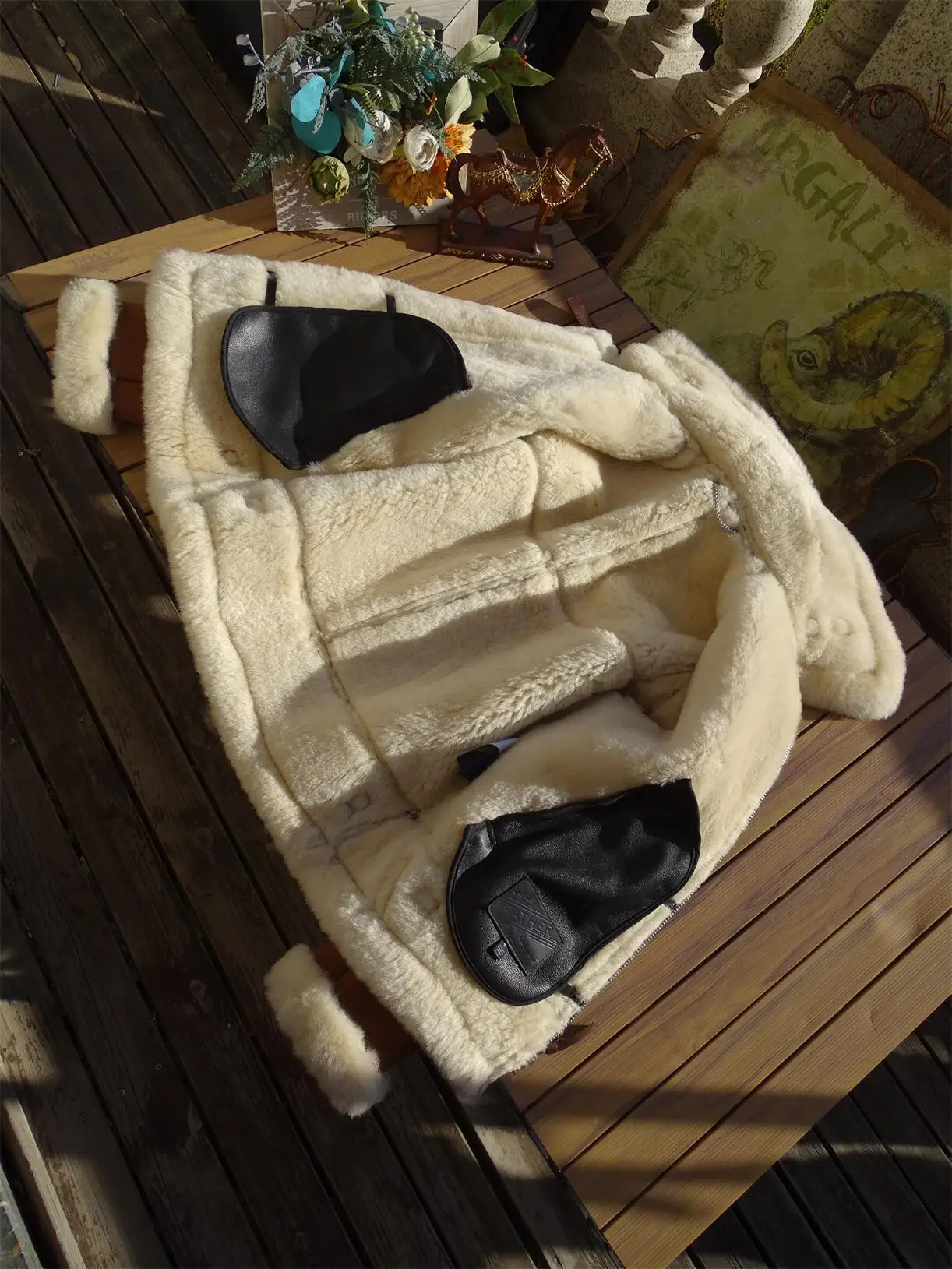
For valuable pieces like our premium men’s black leather coats, selecting the appropriate conditioner will preserve both appearance and longevity.
Step-by-Step Conditioning Process
Follow this comprehensive guide to properly condition your leather coat for maximum protection and longevity.
1. Gather Your Materials
Before beginning, collect all necessary supplies:
– Your chosen leather conditioner
– Two soft, lint-free cloths (one for application, one for buffing)
– Disposable gloves (optional but recommended)
– A clean, flat workspace with good lighting
2. Apply Conditioner Properly
Apply conditioner using this technique:
– Pour a small, dime-sized amount of conditioner onto your application cloth
– Never apply conditioner directly to the leather
– Use small, overlapping circular motions
– Work in sections of approximately 8-10 inches at a time
– Apply thin, even layers—you can always add more if needed
3. Focus on High-Wear Areas
Pay special attention to areas that experience the most friction and movement:
– Collar and lapels
– Elbows
– Shoulder areas
– Cuffs
– Front closure areas
– Seams (gently work conditioner along seam lines)
These areas typically dry out faster and require more conditioning than other parts of the coat.
4. Allow Proper Absorption
Let the conditioner fully penetrate the leather:
– Allow 15-30 minutes for initial absorption
– The leather should absorb the conditioner without leaving a greasy surface
– Absorption time varies based on leather type, age, and condition
– Very dry leather may absorb conditioner quickly and might need a second application
5. Buff to Perfect Finish
Once the leather has absorbed the conditioner:
– Use your clean buffing cloth
– Buff in gentle circular motions
– Continue until any excess conditioner is removed
– The leather should feel soft but not greasy or tacky
6. Allow Complete Drying
After buffing:
– Allow your coat to dry and settle for at least 24 hours
– Hang on a padded hanger away from direct heat or sunlight
– Avoid wearing the coat until it’s fully dried and settled
Troubleshooting Common Application Issues
If you notice streaking, apply a minimal amount of conditioner and buff thoroughly. For areas that seem to repel the conditioner, ensure the leather is completely clean and try a different conditioner formulated for that specific leather type.
Our collection of men’s brown leather coats respond particularly well to proper conditioning, enhancing their rich color depth. For black leather garments, specific care techniques can help maintain their finish—learn about proper care for your black leather jacket to preserve its appearance.
Determining the Optimal Conditioning Schedule
How often should you condition your leather coat? While a general recommendation is every 6-12 months, several factors influence the ideal schedule for your specific garment.
Factors Affecting Conditioning Frequency
Your leather coat’s conditioning needs are influenced by:
Climate conditions – Dry environments accelerate moisture loss, requiring more frequent conditioning (every 4-6 months). Humid environments may extend intervals to 8-12 months.
Wear patterns – Daily use demands conditioning every 3-4 months, while occasional wear (weekly) suggests every 6 months, and seasonal use typically requires conditioning just before and after storage.
Storage environment – Coats kept in climate-controlled environments maintain condition longer than those exposed to temperature and humidity fluctuations.
Leather type and thickness – Thinner, softer leathers typically need more frequent conditioning than thicker, more robust varieties.
Visual Indicators That Conditioning Is Needed
Your coat will tell you when it needs attention through these signs:
- The leather feels noticeably dry or stiff to the touch
- When gently bent, light-colored creases appear in the leather
- The surface looks dull or has lost its natural luster
- The leather feels rough in areas that were previously smooth
- You notice light scratches that don’t buff out easily
Basic Conditioning Schedule Guide
| Usage Level | Dry Climate | Moderate Climate | Humid Climate |
|---|---|---|---|
| Daily wear | Every 3-4 months | Every 4-6 months | Every 6-8 months |
| Weekly wear | Every 4-6 months | Every 6-8 months | Every 8-10 months |
| Occasional wear | Every 6 months | Every 8-10 months | Annually |
| Seasonal use | Before and after storage | Before and after storage | Before and after storage |
Remember that proper conditioning is essential for all types of leather garments, including our full range of men’s leather coats. Regular assessment of your coat’s condition will help you determine when conditioning is needed beyond these general guidelines.
Tailoring Your Conditioning Approach to Different Leather Types
Different leather types require specific conditioning approaches to maintain their unique characteristics and finishes. Understanding your coat’s leather type helps you choose the right products and techniques.
Smooth/Full-Grain Leather
Full-grain leather is the highest quality leather used in premium coats, showing natural grain and markings.
- Identification: Smooth surface with visible natural grain patterns, develops a patina over time
- Recommended conditioners: Cream-based or light oil conditioners with natural ingredients
- Application technique: Use minimal product with gentle, circular buffing
- Special considerations: Can darken slightly with conditioning; always test in an inconspicuous area first
Corrected Grain/Pigmented Leather
This leather has been sanded to remove imperfections and coated with a polymer surface color.
- Identification: Consistent color, uniform appearance, less natural variation
- Recommended conditioners: Light cream conditioners specifically for finished leather
- Application technique: Very light application with more emphasis on buffing
- Special considerations: The pigmented coating can make absorption slower; patience is key
Oil-Tanned Leather
Often used in rugged, casual leather coats, this leather has been treated with oils during tanning.
- Identification: Rich, supple feel with a slightly matte appearance
- Recommended conditioners: Oil-based conditioners designed specifically for oil-tanned leather
- Application technique: Can handle slightly more conditioner; apply evenly and allow longer absorption
- Special considerations: May darken with conditioning, which is usually desirable for this leather type
Specialty Finishes
Some leather coats feature special finishes like antiqued or distressed effects.
- Identification: Intentional color variations, vintage appearance
- Recommended conditioners: Specialized products designed to maintain specific finish effects
- Application technique: Very gentle application focusing on dry areas only
- Special considerations: Test carefully as conditioning may alter the intentional distressed appearance
Important Note About Suede and Nubuck
Suede and nubuck require completely different care approaches than smooth leathers. Never use standard leather conditioners on these materials, as they will ruin the nap and texture. Instead, use only products specifically formulated for suede or nubuck.
Shearling coats combine leather and wool elements, requiring special consideration when conditioning to avoid affecting the wool portions.
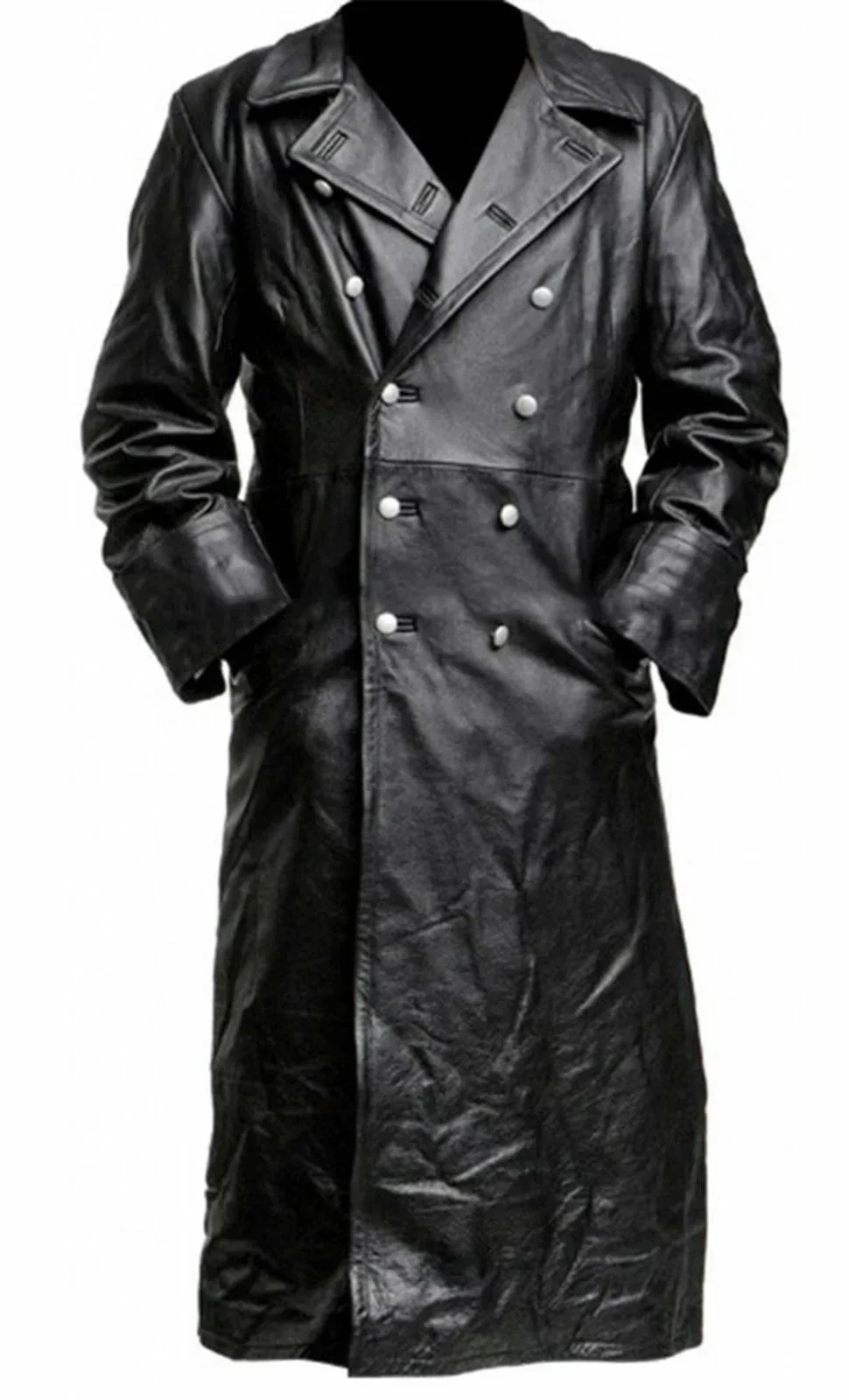
If you’re uncertain about your leather type, examine the coat’s characteristics and compare them to these descriptions. Our guide to men’s brown leather outerwear provides additional details on identifying different leather finishes and their care requirements.
Troubleshooting Common Leather Conditioning Issues
Even with careful application, you may encounter challenges when conditioning your leather coat. Here’s how to identify and address common problems.
Over-Conditioning
Symptoms:
– Greasy or tacky surface that doesn’t dry
– Darkened appearance beyond normal conditioning effect
– Softening to the point of stretching or losing shape
Remedy:
– Gently wipe excess conditioner with a clean, dry cloth
– Use a minimal amount of leather cleaner to remove surface residue
– Allow extended drying time in a well-ventilated area
– For severe cases, consult a professional leather cleaner
Prevention:
– Always use less conditioner than you think you need
– Apply in thin, multiple layers rather than one heavy coat
– Follow product instructions regarding quantities
Under-Conditioning
Symptoms:
– Continued dryness or stiffness after conditioning
– Leather still appears dull or faded
– Visible dry spots or uneven texture
Remedy:
– Apply a second light coat of conditioner to affected areas
– Focus on particularly dry spots with targeted application
– Allow longer absorption time before buffing
– Consider a different conditioner better suited to your leather type
Prevention:
– Establish a regular conditioning schedule
– Don’t wait until leather shows significant drying before conditioning
– Store your coat properly to prevent excessive drying
Discoloration During Conditioning
Symptoms:
– Uneven darkening or lightening
– Splotchy appearance after conditioning
– Color transfer to application cloth
Causes and Solutions:
– Uneven application → Apply conditioner more systematically in sections
– Wrong conditioner type → Switch to product specifically for your leather color
– Residual cleaning solution → Ensure coat is completely dry before conditioning
– Inherent leather variations → Some natural color variation is normal, especially in full-grain leather
Stiffness After Conditioning
Reasons and Fixes:
– Wrong conditioner for leather type → Try a different product formulated for your specific leather
– Insufficient absorption time → Allow conditioner to penetrate longer before buffing
– Environmental factors → Consider humidity and temperature of your space
– Age of leather → Older leather may require multiple light applications
Understanding how to prevent leather coat cracks through proper conditioning helps avoid many of these issues before they develop.
When to Seek Professional Help
Consider professional leather care when:
– Deep cracks have already formed
– Significant color loss has occurred
– The leather has hardened beyond home treatment
– Mold or mildew is present
– Valuable or vintage pieces show signs of deterioration
Avoiding Critical Leather Conditioning Mistakes
Preventing damage is easier than repairing it. Avoid these common conditioning errors to keep your leather coat in optimal condition.
Using Too Much Product
Excessive conditioner doesn’t improve results—it creates problems. Leather can only absorb a limited amount of conditioner; excess sits on the surface, attracting dirt and causing a tacky finish. Always start with a pea-sized amount and add more only if the leather absorbs it completely.
Skipping the Cleaning Step
Conditioning dirty leather traps debris in the fibers, potentially causing long-term damage. Dirt particles can act like sandpaper inside the leather, gradually breaking down fibers from within. Always clean thoroughly and allow complete drying before conditioning.
Incorrect Product Selection
Using conditioners not formulated for your specific leather type can cause irreversible damage. Oil-based products on finished leather may not absorb properly, while wax-based products on unfinished leather might create buildup. Research your leather type and choose conditioners accordingly.
Applying Direct Heat
Never use heat sources to speed drying after conditioning. Hair dryers, radiators, or direct sunlight can cause the leather to shrink, warp, or crack. Heat can also interfere with proper conditioning absorption. Always allow natural drying at room temperature.
Using Household Products
Kitchen oils, petroleum jelly, or furniture polish are not suitable leather conditioners. These products lack the specific formulation needed for wearable leather and can cause rancidity, staining, or breakdown of leather fibers. Invest in proper leather-specific products.
Improper Application Technique
Rough handling or inconsistent application leads to uneven results. Always use soft cloths and gentle circular motions. Work systematically in sections to ensure complete, even coverage.
Improper Storage After Conditioning
Storing a freshly conditioned coat improperly can negate your maintenance efforts. Ensure complete drying before storing, use proper hangers, and maintain appropriate environmental conditions. Learn comprehensive leather jacket protection techniques to preserve your conditioning results.
Proper Storage of Your Freshly Conditioned Leather Coat
After investing time in conditioning your leather coat, proper storage ensures lasting results and prevents premature wear.
Optimal Storage Environment
Store your leather coat in a cool, dry environment with these conditions:
– Temperature between 60-75°F (15-24°C)
– Humidity between 45-55%
– Away from direct sunlight to prevent fading
– Good air circulation to prevent mildew
– Distance from heat sources like radiators or heating vents
Proper Hanging Techniques
How you hang your coat makes a significant difference in maintaining its shape:
– Use broad, padded hangers that support the shoulders
– Avoid wire hangers that can create pressure points and distort the shape
– Allow space between garments for air circulation
– Periodically rotate the position to prevent constant pressure in the same areas
Appropriate Coat Covers
Protect your coat from dust while allowing it to breathe:
– Use cotton garment bags rather than plastic
– Never store in sealed plastic bags, which trap moisture and promote mildew
– If using a garment bag, ensure it’s longer than the coat to prevent creasing at the bottom
– Consider periodic airing even during storage
Expert long-term storage methods can significantly extend your coat’s lifespan, especially for seasonal storage when your coat won’t be worn for extended periods.
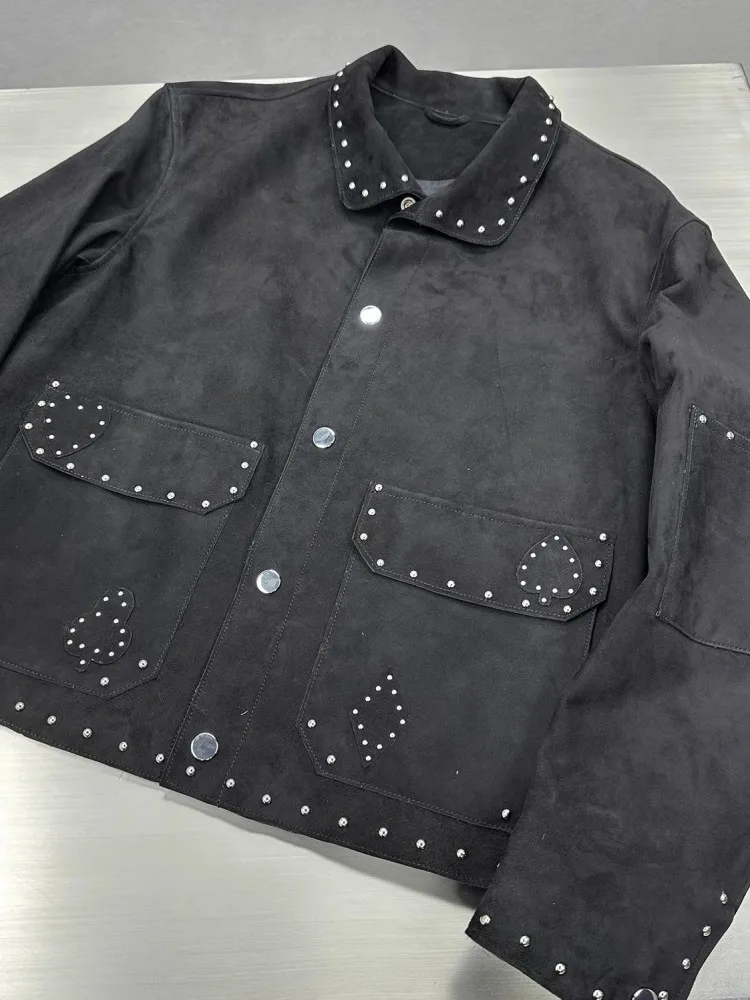
Our collection of men’s sheepskin coats require these same careful storage considerations after conditioning to maintain their unique leather and fur components.
Mens Leather Coat, Mens Long Leather Coat
Price range: $225.22 through $235.58 Select options This product has multiple variants. The options may be chosen on the product pageMens Black Leather Coat, Mens Leather Coat
Price range: $181.52 through $197.20 Select options This product has multiple variants. The options may be chosen on the product pageMens Brown Leather Coat, Mens Leather Coat
$846.94 Select options This product has multiple variants. The options may be chosen on the product pageMens Shearling Coat, Mens Sheepskin Coat
$888.08 Select options This product has multiple variants. The options may be chosen on the product page- Price range: $96.28 through $130.88 Select options This product has multiple variants. The options may be chosen on the product page
Mens Shearling Coat, Mens Sheepskin Coat
$2,257.19 Select options This product has multiple variants. The options may be chosen on the product page
Advanced Leather Coat Care: Beyond Basic Conditioning
While conditioning forms the foundation of leather care, additional protective measures can further extend your coat’s life and enhance its appearance.
Weather Protection Products
Consider applying a leather protector after conditioning to:
– Create a barrier against water and snow
– Prevent staining from environmental contaminants
– Protect against UV damage that can fade and dry leather
These products are particularly important if you wear your coat in varied weather conditions. Learning how to properly waterproof your leather coat provides additional protection beyond basic conditioning.
Professional Servicing Options
For valuable or vintage leather coats, periodic professional care offers benefits beyond home maintenance:
– Deep cleaning that removes embedded dirt without damaging leather
– Color restoration for faded areas
– Professional repair of minor damage before it worsens
– Expert conditioning with specialized products
Consider professional servicing every 3-5 years for coats worn regularly, or whenever significant issues arise that home care can’t address.
Specialized Treatments
Some leather issues benefit from targeted solutions:
– Edge coatings for worn seams and hems
– Color restorers for specific wear areas
– Specialized softeners for vintage leather that has stiffened with age
– Mold and mildew treatments for coats exposed to damp conditions
These treatments should supplement—not replace—regular conditioning.
At Metro Cloak, we understand that proper leather care significantly extends the life of premium garments. Comprehensive long-term leather coat care involves both conditioning and these supplementary practices, preserving your investment for years to come.
Remember that quality leather improves with proper care, developing character and patina that make your coat uniquely yours. With the right conditioning routine and advanced care practices, your leather coat will remain a staple in your wardrobe, becoming more distinctive and personal with each passing year.

